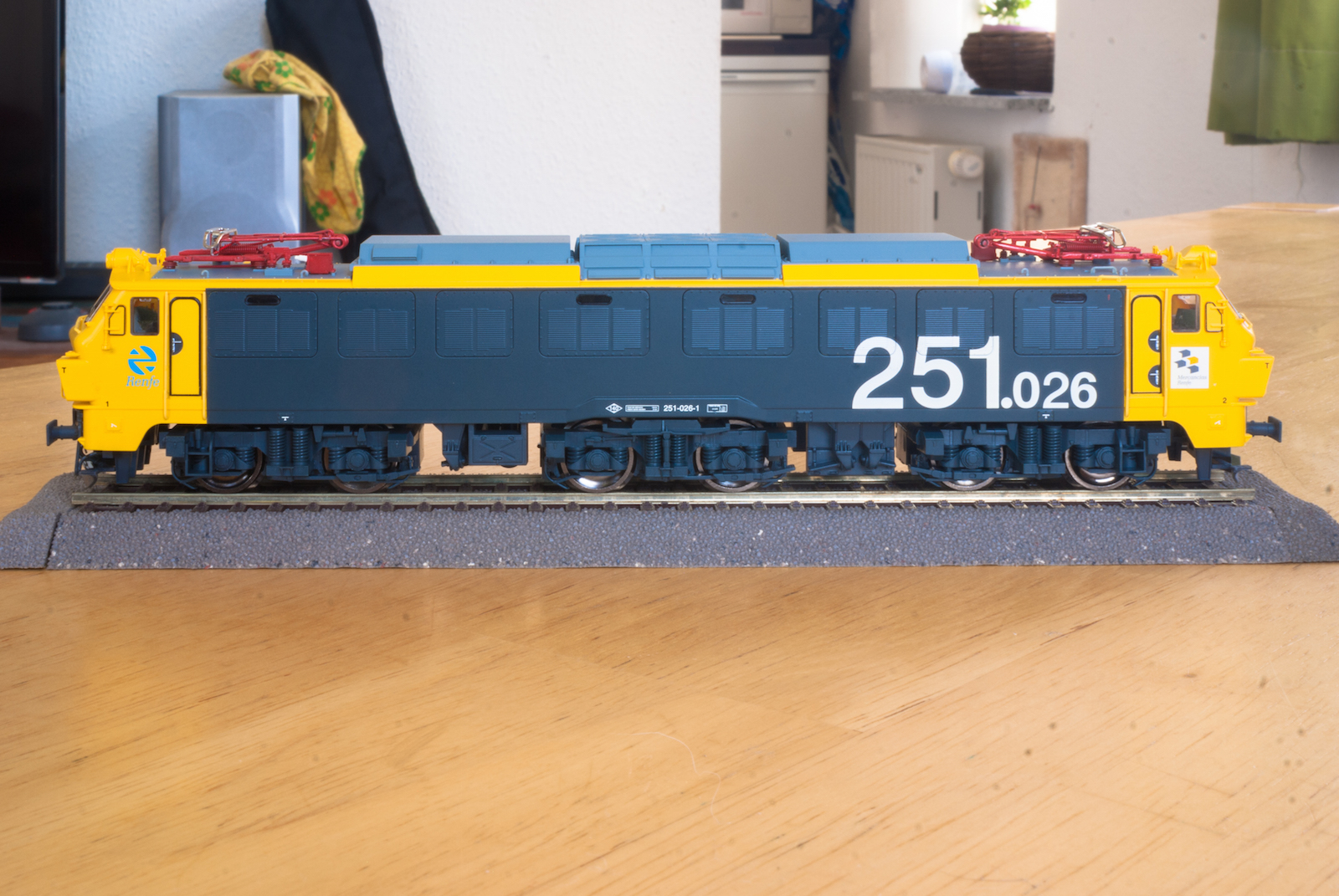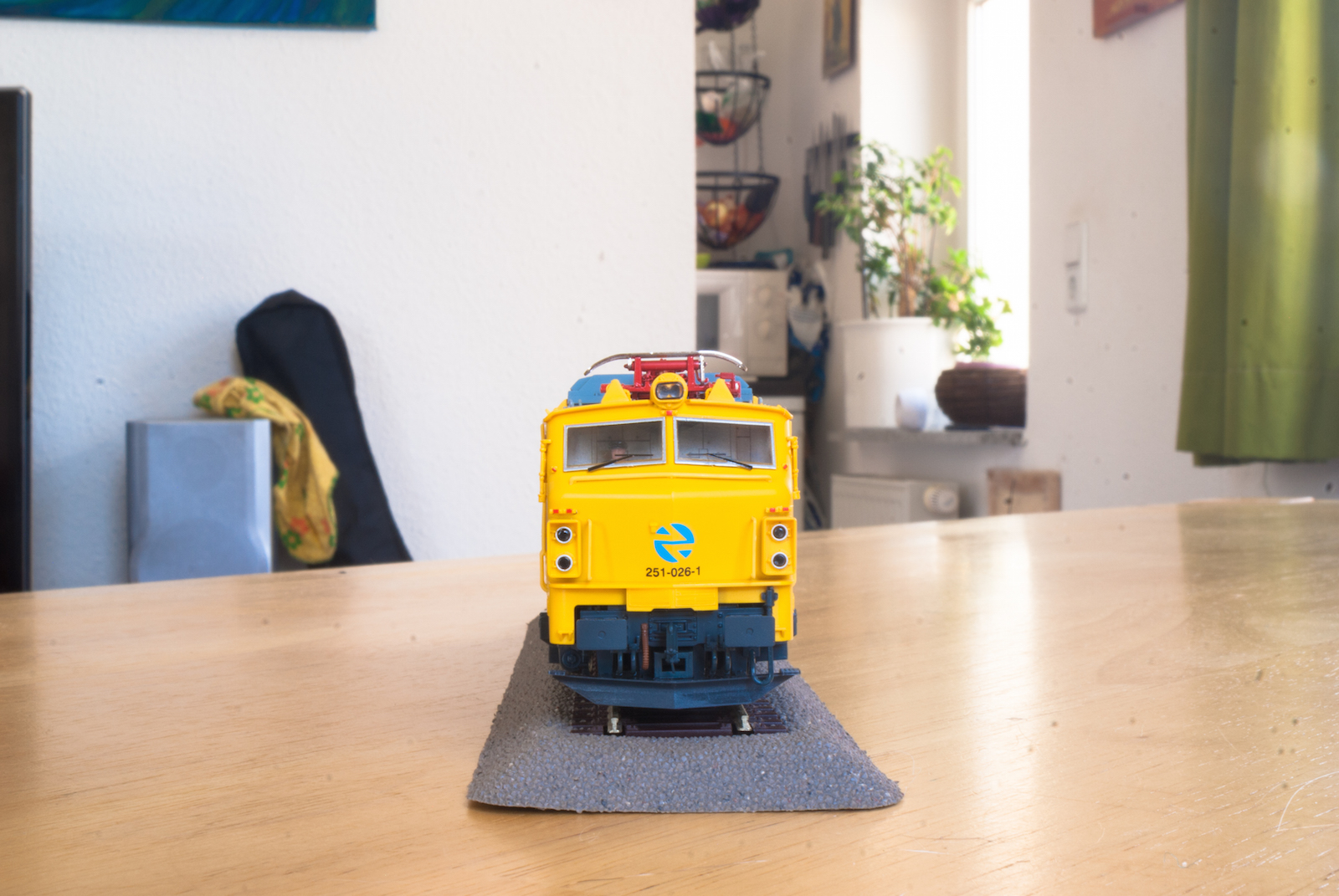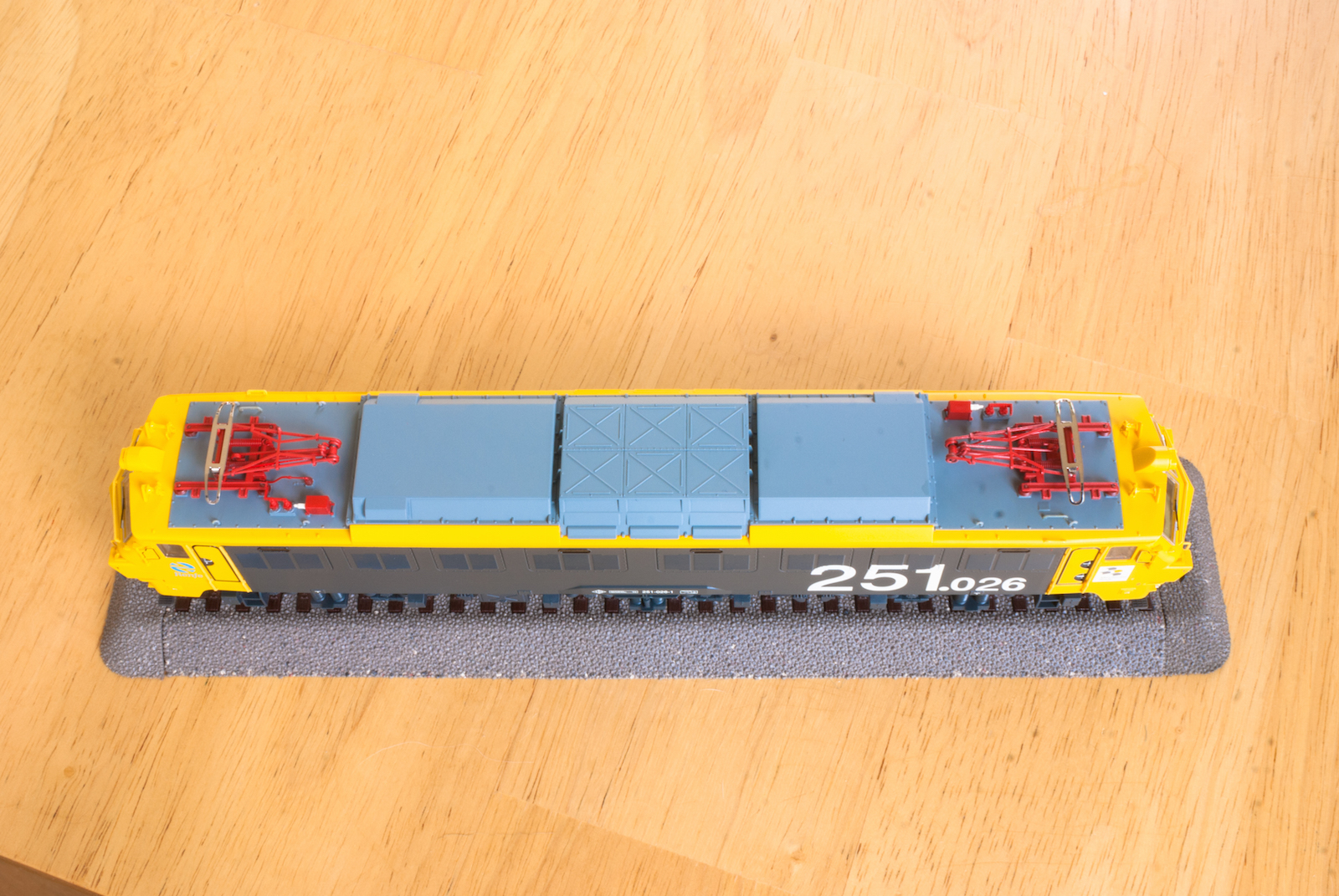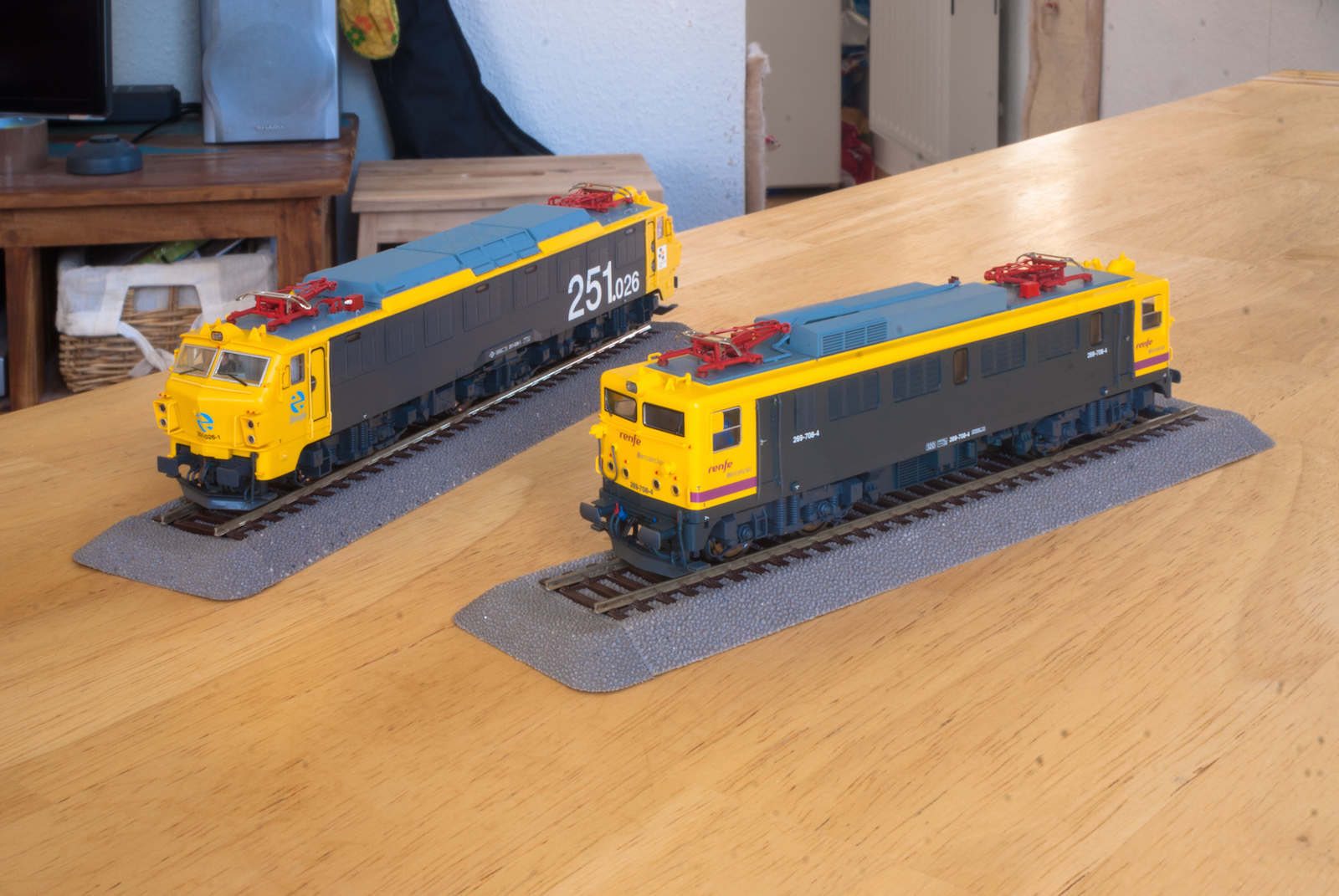EF66's Big Sister: Renfe Mercancías Series 251 electric locomotive
Morning all!
The locomotive we are going to look at today will probably appear strikingly familiar to anyone following the Japanese railway scene, highlighting the multitude of influences the Spanish railways took on in the post-1945 era.
As indicated previously, the motive power inventory of Renfe in the post-war period was characterised by various procurements from foreign locomotive builders due to an initial lack of independent development capacities for designs matching the established standards of the time. However, to bolster national industry capabilities, many of these procurement contracts made provisions for producing the majority of locomotives from these contracts domestically under licence.
For electric locomotives in particular, Spain approached both French and indeed Japanese locomotive builders, so that a sizeable proportion of the present motive power inventory for freight service in particular is, in fact, derived from contemporary Japanese National Railways types such as the Class EF66 with their Bo’Bo’Bo’ configured chassis, which continues to be typical of numerous Japanese mainline locomotives until this day.
To obtain high power universal locomotives for the heaviest freight and passenger services to exist at the time, Renfe had, once again, contracted Mitsubishi during the late 1970s, specifying a 12-wheel design utilising thyristor choppers for power regulation and therefore yielding superior adhesion and tractive effort. As indicated, the result was closely related to the JNR EF66, and could be understood as a scaled-up, broad gauge version of that class.
With the contract also specifying production under licence by Spanish railway equipment builders CAF (Construcciones y Auxiliar de Ferrocarriles), MACOSA (Material y Construcciones, S.A.), as well as the Spanish sections of General Electric and Westinghouse, thirty Series 251 electrics were produced and delivered from 1982 till 1984. Of these, the first two were assembled by Mitsubishi and shipped to Spain, while the rest were assembled in Spain proper. Initially utilised in a mixed role for passenger and freight work, the class has been summarily assigned to the Renfe freight sector since the early 1990s.
Technical description
Sharing the extravagant visual appearance of the JNR EF66 with split, sloped windscreens, and prominent, angular cab faces with protruding lower headlight fairings, the 251 has an all-welded body and running frame made predominantly of steel, but could be built to greater overall dimensions due to the loading gauge used in Spain being considerably larger than the Japanese. In particular, the 251 could be built with fully vertical body sides, which are tilted inwards at roughly 2/3 height on the EF66 to maintain sufficient topside clearance as per the Japanese loading gauge. On each body side on the 251, four panels with three ventilation grilles and four with two grilles are provided, in a 3-2-2-3-3-2-2-3 arrangement. The three-grille panels also comprise small windows immediately above the grilles.
Naturally, the class had to be outfitted with UIC compliant draw gear and buffers in lieu of knuckle couplers. Furthermore, the 251 needed to be designed with the large, high intensity central headlight which continues to be typical of Spanish motive power and which is of sufficient importance that as per Section 258, Paragraph 3 of the General Operating Regulations, any locomotive is to be considered unfit for service with a failed high intensity light if it is booked to work any services operating at night, or at daytime if using routes comprising tunnels longer than 300 metres.
Among other European locomotives, the 251 also stands out in that it utilises three four-wheel bogies, which design otherwise was mainly adopted by the Italian railways. The bogies are fundamentally identical to those also used on the Series 289 and 269 locomotives which Renfe procured from 1969 till 1972 and from 1973 till 1985 respectively. In fact, the bogies of the 269 and 251 are designed to be interchangeable. To obtain suitable performance in both passenger and freight traffic, Renfe had specified the bogies used on all these classes to be outfitted with two-gear transmissions. Similar in principle to several French locomotives such as the CC 6500, this allowed a "Low" or "High" transmission ratio to be selected while the locomotive was stationary. Speed limitations were set at 160 kph for "High" and 100 kph for "Low", though the 251s were restricted to 140 kph a few years after introduction owing to high speed stability issues with the centre bogie and to the corresponding gear ratio having turned out not to be ideally suited. With the class now being primarily used for freight work, the gear change capability has, essentially, become irrelevant in any case.
Also mirroring French practice of the time, the bogies were thus designed with only one large traction motor which, technically, consisted of two demi-motors with a common shaft for both rotors. For the Series 251, this yielded a B’B’B’ wheel arrangement. As the locomotive was designed with one rigid running frame rather than an articulated body as, for example, found on Italian "Tri-Bo" designs, the centre bogie can displace laterally for suitable curve running abilities. The bogies, except for the centre one, are bolsterless, utilising helical springs both for primary and secondary suspension. For force transmission, the class utilises a total of six traction bars, with one diagonally offset pair per bogie connecting to the lower corners of the bogie frames and thus continuing the unusual configuration also provided on the 269.
Internally, the 251 differs from the EF66 primarily through it being designed with thyristor choppers for motor regulation, which in Spain were first used for practical evaluation on the small batch of four Series 269.600 electrics. On the 251, two chopper units are provided for each bogie, with one regulating motor tension and the other governing the motor field shunt. All motors are connected in parallel and can also be used for dynamic braking, with brake excitation being provided by the traction choppers and recuperated power being rheostatically dissipated.
The rheostatic brake is blended with the pneumatic brake, which utilises two-sided tread brake pads acting on all wheelsets. It is worth mentioning that vacuum brakes continued to be used on Spanish passenger stock roughly till the mid-1980s and indeed till the mid-1990s on freight stock, so that until the conversion to full air brake operation, motive power, including the 251, needed to be dually fitted for air and vacuum brake. Following the withdrawal of vacuum-braked stock from revenue service, the relevant equipment on motive power was generally disabled and, usually, removed during maintenance work.
Rooftop equipment is set on three independently removable panels, of which the central panel comprises the braking rheostat fairing. The pantographs used on the 251, as well as the contemporary 269 and 289, are a variant of the French Faiveley AM 18 single arm type.
Auxiliary systems such as ventilation and compressors are powered by a 380 V, three phase AC grid, in turn supplied by two motor-alternators, while low tension auxiliary circuits are supplied by a 72 V circuit with supporting battery.
As delivered, the 251s wore a blue livery with dark grey chassis, and yellow cab face warning panels and trim stripes. The broadside ventilation grilles were blue on 251-001 and 002 originally but aluminium on the remaining locomotives.
In the early 1990s, the 251 began being repainted in the yellow and dark grey scheme officially known as the "Tracción" livery but colloquially called the "Taxi" livery, where the cab sections and rooftop were yellow and the body sides, grilles included, dark grey. At this time, the locomotives also had the number plates and chromed trim originally attached to the cab faces removed as these items had turned out as being corrosion hot spots. As the only exception, 251-004 has retained its original appearance – including the blue and yellow livery, number plates, and chrome trim – till this day.
Most recently, the remaining fleet of 29 locomotives has begun adopting the „Operadora“ livery, utilising the „Mercancías“ variant with grey body sides.
 Mercancías 251-008 Renfe by The Reeler, on Flickr
Mercancías 251-008 Renfe by The Reeler, on Flickr
 251-004 en Avila by TrenSalamanca, on Flickr. Note different ventilation grilles above centre bogie.
251-004 en Avila by TrenSalamanca, on Flickr. Note different ventilation grilles above centre bogie.
Due to their high tractive effort of 453 kN, elevated power output of 4,650 kW and low propensity for wheelslip even under heavy load, the 251s are most frequently booked onto block services of steel coil carriers, as well as material supply services for steel works and other heavy industries. They also provide banking services but are not MU capable. Their main areas of operation are the mainlines crossing the mountain ranges in the hinterland of Asturias, Galicia, Cantabria, and Castile and León.
Characteristics
Length, width and height – 20.70, 3.19 and 4.28 m
Wheel diameter – 1,060 mm
Service weight – 138 tonnes
Power output – 4,650 kW duration, 4,980 kW one-hour peak
Tractive effort – 453 kN initial, 349 kN duration
Configuration – B’B’B’
The model
Being a prominent type of Spanish motive power, the 251 was probably an especially likely candidate for a H0 scale model, which Electrotren first marketed in 2007. As of now, there seem to have been at least six releases in different appearances, which according to my information were the following – references ending in even numbers being for conventional DC, DCC fitted ("D") and DCC sound ("S") fitted versions; those in odd numbers for three rail AC versions without and with digital sound ("S"):
#2580/2580D/2581 – 251-001 in original blue and yellow with blue grilles
#2582/2582D/2583 – 251-006 in original blue and yellow with silver grilles
#2584/2584D/2584S/2585/2585S – 251-008 in yellow and dark grey "Taxi" livery
#2586/2586D/2586S/2587/2587S – 251-018 in "Operadora" livery
#2588/2588D/2588S/2589/2589S – 251-026 in "Taxi" livery
#2590/2590D/2590S/2591/2591S – 251-014 in "Operadora" livery
With one of the goals for this Spanish modelling corner being an illustration of the peaceful coexistence of newer and older liveries which in general still exists on the Spanish railways, I opted for #2588. The locomotive depicted, 251-026, was built by CAF and delivered in 1983, and actually has been repainted in the "Operadora" livery already. I but might save that livery for a possible second 251!
Like all 251s, 251-026 is allocated to the Llanera depot, which is located in the namesake community of about 14,000 inhabitants between Gijón and Oviedo in Asturias.

The model comes in sturdy cardboard and styrofoam boxing, with a bag of detailing parts containing both a set of cut-off and full length brake pipes, as well as faux couplers and one full and one cut-out snow plough each. The outer bogies are powered from a central motor, while the centre bogie can – as on the prototype – displace laterally. The model weighs 605 grams.

The 251's shape keeps reminding me personally of American limousines from the 1960s! You may notice the letter "T" on the lower headlight fairings. Also present on the Series 269 locomotive from my earlier posting as well as other types so configured, this lettering indicates that the locomotive in question has sufficiently dampened buffers for working Talgo stock. Specifically, this was a reference to the variable gauge Talgo IIIRD formations which, together with the domestic Talgo III variant, formed the bulk of that Talgo stock in existence at the time the 251s were introduced.

I suppose the billboard style format for the broadside running numbers was chosen to assist drivers, yard staff and signallers in identifying specific locomotives even at a distance. Note the solebar recess atop the centre bogie which was required to allow the centre bogie to not only rotate but to displace as well, for which purpose the centre bogie was outfitted with a transversal bolster.
Again, notice the offset traction bar attachment consoles behind the second and between the fourth and fifth wheelset counting from Cab 1.
The text boxes atop the centre bogie specify the following data, counting from Cab 1:
– Maximum speed of 140 kph
– Service weight of 138 tonnes and handbrake weight of 24 tonnes
– Braking data:
CH-GPR – Charmilles type brake controller valve with settings G, P and R
Braking weights: G 77 tonnes, P 121 tonnes, R 152 tonnes. Again, the dynamic brake is disregarded.

Several 251s have had differently arranged windscreen wipers fitted with pivots above the panes rather than below. Note the vacuum brake pipe immediately next to the coupler, and, again, the traction bar attachment console below the bufferbeam on the driver's side.

Topside equipment is, again, relatively sparse. Note the very short busbars passing into the locomotive's interior very near the pantographs proper, as well as the actuators and associated push rods.
"Buddy" snapshot with the 269:

…and, again, a few Youtube videos. Thank you for your time!
-
 6
6




3 Comments
Recommended Comments
Create an account or sign in to comment
You need to be a member in order to leave a comment
Create an account
Sign up for a new account in our community. It's easy!
Register a new accountSign in
Already have an account? Sign in here.
Sign In Now